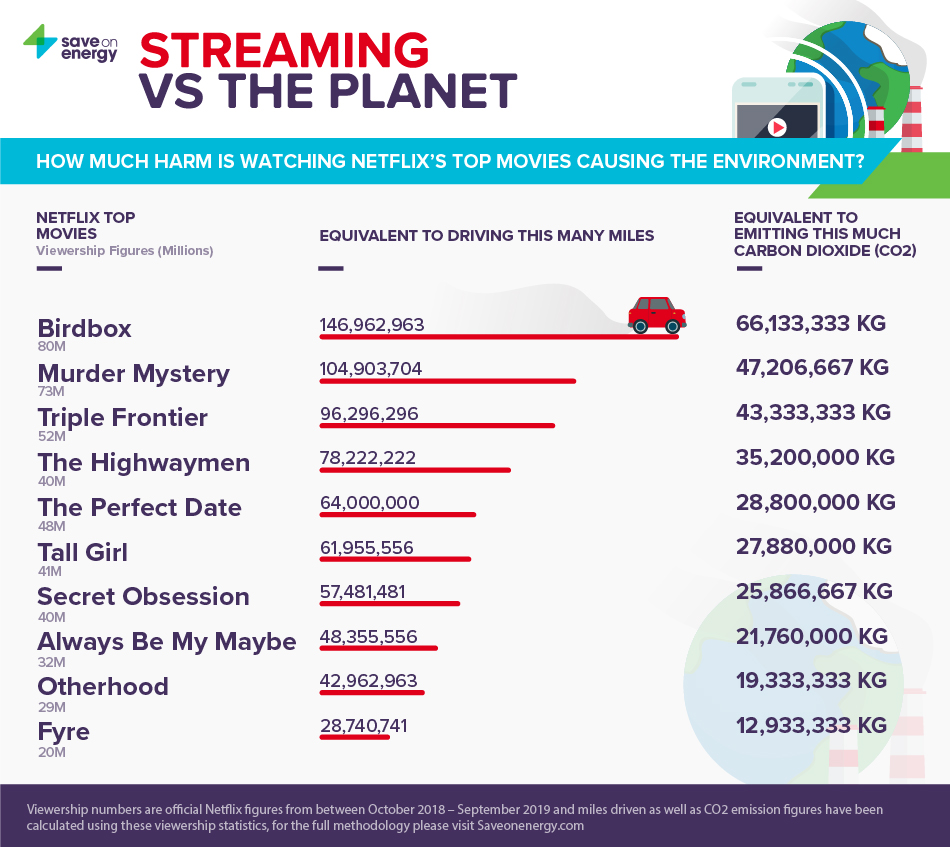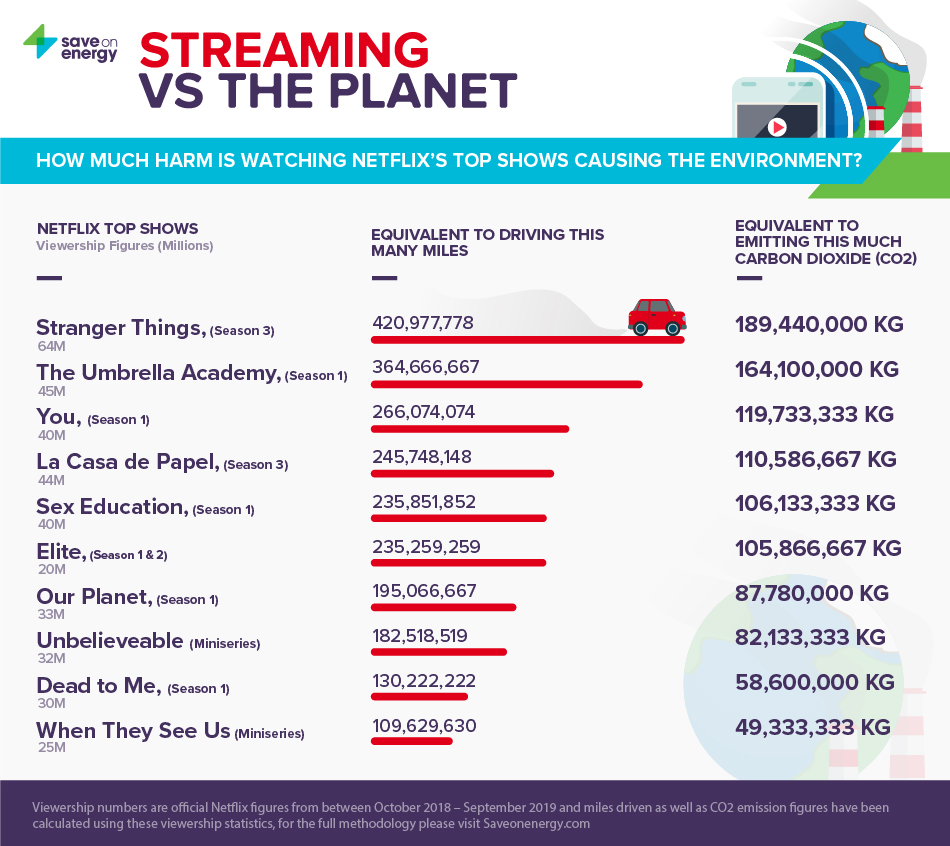Netflix hits like Sex Education and Stranger Things could be causing damage to the environment with millions of tonnes of Carbon Dioxide being released into our atmosphere, a study has found.
Netflix and other streaming platforms have become the main source of TV viewing for millions of us across the UK, but new research shows that the habit might not be that eco-friendly.
For an individual to stream video content, it has to travel through a complex network (i.e. cables, routers, data centres etc.) that runs on vast sums of electricity. This electricity in turn generates carbon dioxide (CO2) – which can leave a devastating impact on the environment.
Interested in the carbon footprint from streaming, energy comparison site SaveonEnergy utilised official viewership figures to discover what watching Netflix’s top original movies and shows is equivalent to in terms of miles driven by a car, and the amount of carbon dioxide (CO2) emitted.

Save on Energy found that the energy generated from Netflix users’ total 80 million views of the thriller Birdbox is the equivalent of driving more than 146 million miles and emitting over 66 million kg of CO2.
To put that into context, the equivalent of driving from London (United Kingdom) to Istanbul (Turkey) and back 38,879 times.
The energy produced from 73 million streams of Adam Sandler’s Murder Mystery translates to driving over 104 million miles and emitting more than 47 million kg of CO2.

Since taking a return flight from London (United Kingdom) to Los Angeles (United States) creates 1,650 kg of CO2 per person – this means an individual needs to fly 28,610 times from London to Los Angeles and back to produce the same amount of CO2 amassed by every Netflix user who has watched Murder Mystery.
And binging on your favourite series?

Save on Energy discovered that the energy accumulated from the 64 million streams of Stranger Things season three is comparable to driving more than 420 million miles and emitting over 186 million kg of CO2.
This is effectively driving from Marrakech (Morocco) to Cape Town (South Africa) and back 12,771 times.
Subsequently, the energy garnered from 45 million views of the Umbrella Academy season one, translates to driving more than 164 million miles and emitting over 364 million kg of CO2.
Flying from London to Perth and back produces 3,153 kg of CO2 per person – this means an individual would need to fly 115,657 times from London (United Kingdom) to Perth (Australia) and back to produce the same amount of CO2 generated from those who have watched Umbrella Academy season one.
Save on Energy discovered that the energy accumulated from the 64 million streams of ‘Stranger Things’ season three is comparable to driving more than 420 million miles and emitting over 189 million kg of CO2.
This is effectively driving from Marrakech (Morocco) to Cape Town (South Africa) and back 28,391 times.
Subsequently, the energy garnered from 45 million views of the ‘Umbrella Academy’ season one, translates to driving more than 364 million miles and emitting over 164 million kg of CO2.
Flying from London to Perth and back produces 3,153 kg of CO2 per person – this means an individual would need to fly 52,046 times from London (United Kingdom) to Perth (Australia) and back to produce the same amount of CO2 generated from those who have watched ‘Umbrella Academy season one’.
Flying from London to Perth and back produces 3,153 kg of CO2 per person – this means an individual would need to fly 115,657 times from London (United Kingdom) to Perth (Australia) and back to produce the same amount of CO2 generated from those who have watched Umbrella Academy season one.
Netflix says that it is trying to be as “efficient as possible” but the majority of the power used to supply us those hours of entertainment actually lies in the Servers that hold all that information.
They explain,
“This includes the energy use of companies we work with such as Amazon Web Services and Google Cloud, and the power required to support the servers we install with internet providers.
“We don’t control this energy footprint, so we’re not able to address its efficiency directly ourselves. But we do account for the emissions by matching them with regional renewable energy certificates and carbon offsets.
“This indirect energy use was about 357,000 megawatt-hours in 2019.
*This article was updated to reflect the correct miles and C02 emissions.

